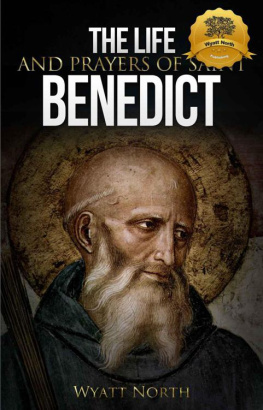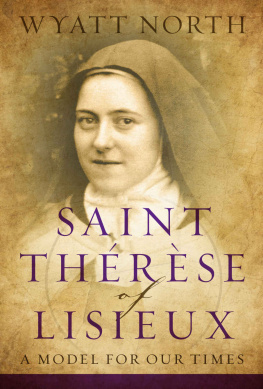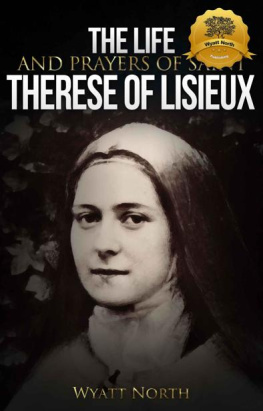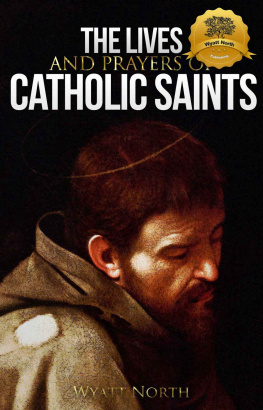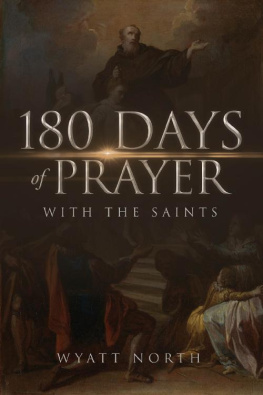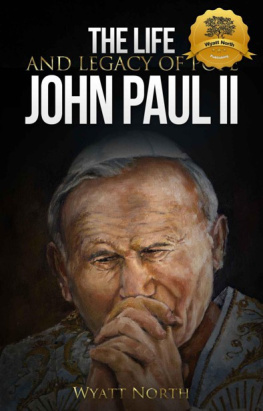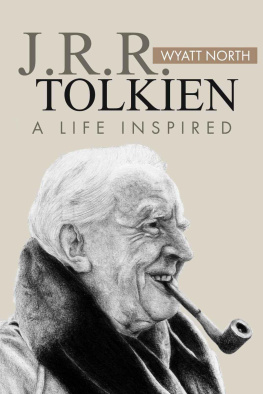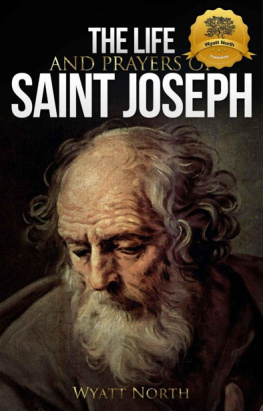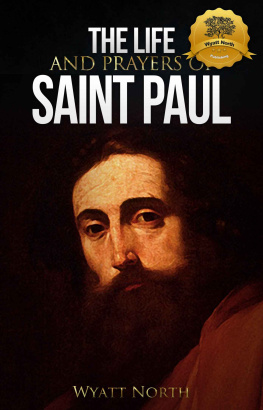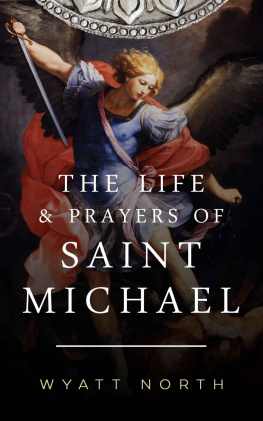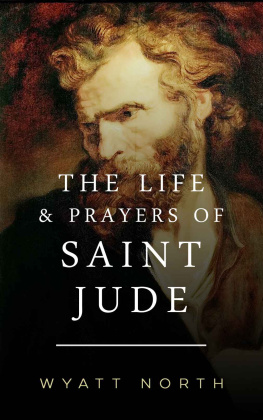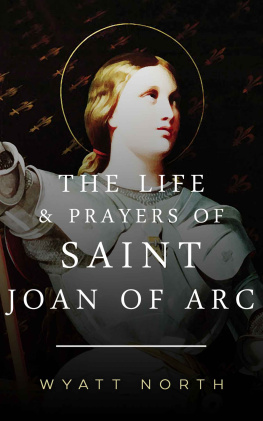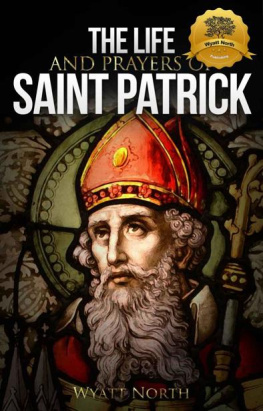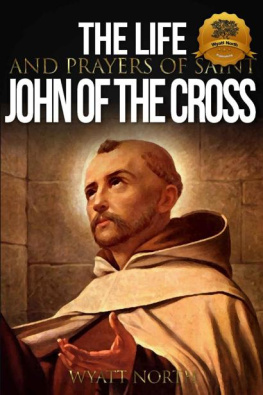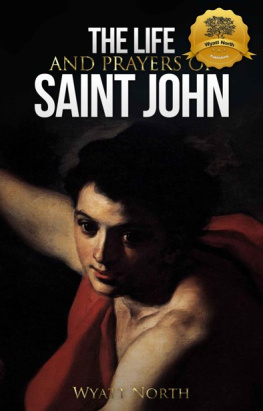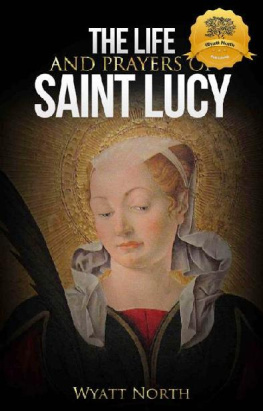Wyatt North - The Life and Prayers of Saint Benedict
Here you can read online Wyatt North - The Life and Prayers of Saint Benedict full text of the book (entire story) in english for free. Download pdf and epub, get meaning, cover and reviews about this ebook. year: 2013, publisher: Wyatt North Publishing, LLC, genre: Religion. Description of the work, (preface) as well as reviews are available. Best literature library LitArk.com created for fans of good reading and offers a wide selection of genres:
Romance novel
Science fiction
Adventure
Detective
Science
History
Home and family
Prose
Art
Politics
Computer
Non-fiction
Religion
Business
Children
Humor
Choose a favorite category and find really read worthwhile books. Enjoy immersion in the world of imagination, feel the emotions of the characters or learn something new for yourself, make an fascinating discovery.
- Book:The Life and Prayers of Saint Benedict
- Author:
- Publisher:Wyatt North Publishing, LLC
- Genre:
- Year:2013
- Rating:3 / 5
- Favourites:Add to favourites
- Your mark:
- 60
- 1
- 2
- 3
- 4
- 5
The Life and Prayers of Saint Benedict: summary, description and annotation
We offer to read an annotation, description, summary or preface (depends on what the author of the book "The Life and Prayers of Saint Benedict" wrote himself). If you haven't found the necessary information about the book — write in the comments, we will try to find it.
The Life and Prayers of Saint Benedict — read online for free the complete book (whole text) full work
Below is the text of the book, divided by pages. System saving the place of the last page read, allows you to conveniently read the book "The Life and Prayers of Saint Benedict" online for free, without having to search again every time where you left off. Put a bookmark, and you can go to the page where you finished reading at any time.
Font size:
Interval:
Bookmark:

Wyatt North Publishing, LLC 2013
Publishing by Wyatt North Publishing, LLC. A Boutique Publishing Company.
Wyatt North Publishing, LLC
P.O. Box 120787
Boston, MA 02112
Wyatt North and A Boutique Publishing Company are trademarks of Wyatt North Publishing, LLC.
Copyright Wyatt North Publishing, LLC. All rights reserved, including the right to reproduce this book or portions thereof in any form whatsoever. For more information please visit http://www.WyattNorth.com .
Cover design by Wyatt North Publishing, LLC. Copyright Wyatt North Publishing, LLC. All rights reserved.
Scripture texts in this work are taken from the New American Bible, revised edition 2010, 1991, 1986, 1970 Confraternity of Christian Doctrine, Washington, D.C. and are used by permission of the copyright owner. All Rights Reserved. No part of the New American Bible may be reproduced in any form without permission in writing from the copyright owner.
About Wyatt North Publishing
Wyatt North Publishing is a boutique publishing company that always provide high quality, perfectly formatted, Books.
All of our eBooks include a Touch-or-Click Table of Contents, allowing easy and instant access to each section.
We guarantee our Books. If you are not 100% satisfied we will do everything in our power to make you happy. Visit .
Thank you for your purchase
Never miss a free book from Wyatt North, and receive FREE inspirational eBooks for your eReader!
Thousands of readers have already joined. Sign up for free today.
Click here for free eBook offers!
Table of Contents
Foreword
St. Benedict was not interested in fame, power, or legacy. He was only interested in living the Christian life to the fullest and helping those around him to do the same. The rest is historyand the work of Providence.
St. Benedict is regarded as the Father of the Benedictine Order of both religious men and women that follow his Rule, a key principle of which is ora et labora pray and work.
Today, many people wear holy medals of St. Benedict, invoking his intercession for protection against the powers of evil. Not only consecrated religious but also many lay people find inspiration in his call to balance, discipline, and prayer. Historically, St. Benedict helped bridge the early Church with the medieval period by standing on the shoulders of the fathers of the monastic tradition and bringing that tradition solidly into a new era.
The Life and Saint Benedict
Introduction
St. Benedict of Nursia (480547), the Father of Western Monasticism, is both challenging and inspiring to us. In the midst of our busy lives, it is good for us to pause to reflect on the life of a great man of our ancient heritage who marched to the beat of a higher drummer. St. Benedicts serene trust in God, his battle with the devil and with his own tendencies, his discipline and leadership, and his life of prayer beckon us to look within and to sharpen our resolve. St. Benedicts story is also important in appreciating an institution that was central to the development of Western civilizationthe monastery.
St. Benedict earnestly believed that one who is a spiritual leader for others must first conquer himself. This is precisely what St. Benedict did, and the fruits were manifold not only for his own monks but for all Europe and the Church for ages to come. He is revered for his holiness of life, for his silence, penitence, and wisdom, for his many miracles, and for his dramatic fight against demonic forces. Living at a time of great social and political upheaval in central Italy during the decline of the Roman Empire, St. Benedict helped provide peace and stability within the walls of the monasteries. He is particularly remembered for his monastic rule, appreciated for its balance, moderation, wisdom, and universality, which spread as a guide for monastic life throughout Europe for centuries and became foundational centers for its often troubled society. Largely due to the influence of his rule in equipping monasteries to play a key role in the formation and edification of Europe, St. Benedict was proclaimed co-patron of Europe by Pope Paul VI in 1964. Because of his influence on Europe, Pope Benedict XVI chose the saint for the patron of his pontificate, which was dedicated to the rebuilding of Christian Europe. St. Benedict's feast day is July 11.
St. Benedict is regarded as the Father of the Benedictine Order of both religious men and women that follow his Rule, a key principle of which is ora et labora pray and work.
Today, many people wear holy medals of St. Benedict, invoking his intercession for protection against the powers of evil. Not only consecrated religious but also many lay people find inspiration in his call to balance, discipline, and prayer. Historically, St. Benedict helped bridge the early Church with the medieval period by standing on the shoulders of the fathers of the monastic tradition and bringing that tradition solidly into a new era.
St. Benedict was born in 480 in Nursia, a town in the midst of the beautiful hills, valleys, and lakes of central Italy. Sent in his adolescence to complete his classical education in Rome, the young St. Benedict was scandalized by the lax morality and wild partying of his fellow students and left to find peace as a hermit, stopping first at Enfide and then settling in a cave among the hills of Subiaco. St. Benedict later became a leader of a number of monastic communitiesmost famously Monte Cassinoand a writer of his influential monastic rule intended for governing that community.
Politically, his time in history was very turbulent as barbarian tribal armies slowly pillaged and seized key parts of the once glorious Roman Empire, including Rome itself. Civilized people had begun losing confidence in earthly rulers. Christianity had emerged as the dominant religion, yet morals were often lax and paganism still had its adherents, especially in the countryside. Many of the barbarian conquerors had been converted to Christianity but often in a heretical Arian form that denied the full divinity of Christ, as taught to them by Arian missionaries years before their conquest.
The only source contemporary to St. Benedict that documents him is the Dialogues of Pope St. Gregory the Great (540604), a man who provided strong leadership in Rome in the absence of stable secular authorities. St. Gregory, a monk himself raised to the See of Peter, wrote his Dialogues in the form of a dialectic conversation with his subdeacon Peter about saintly miracle workers in Italy, in effect contrasting the impotence of secular powers to the power of God. He writes of St. Benedict in the second book of his Dialogues, giving us a patchwork of inspirational stories from the saints life that paint a picture for us of his holiness, miracles, exorcisms, and monastic community. St. Gregory also praises St. Benedicts Rule, which likewise gives us a picture of St. Benedicts values and lifestyle.
St. Benedict and the Monastic Tradition
While St. Benedict is indeed known as the Father of Western Monasticism, Benedictine scholars remind us that he was not alone in his influence but emerged as a key leader within the monastic tradition for the West (see RB 1980: The Rule of St. Benedict in Latin and English with Notes , edited by Timothy Fry, O.S.B., to look further into the historical background on monasticism presented here). Monasticism, which entails a permanently celibate Christian life set apart from society for the pursuit of spiritual perfection, grew as a movement several centuries prior to St. Benedict. In the early days of the Church, heroic virtue was clearly seen in the sacrifice of the martyrs during the Roman persecutions. But after the Emperor Constantine not only legalized Christianity in 313 but later even granted Christians a privileged place under the law, this led to a new laxity within the Church. More believers came to the Church with insincere motives and lack of fervor. As a response, some of those that desired the full vitality of Christian life as witnessed in the martyrs set out for a separate life of prayer and fasting in the deserta white martyrdom of death to self each day.
Next pageFont size:
Interval:
Bookmark:
Similar books «The Life and Prayers of Saint Benedict»
Look at similar books to The Life and Prayers of Saint Benedict. We have selected literature similar in name and meaning in the hope of providing readers with more options to find new, interesting, not yet read works.
Discussion, reviews of the book The Life and Prayers of Saint Benedict and just readers' own opinions. Leave your comments, write what you think about the work, its meaning or the main characters. Specify what exactly you liked and what you didn't like, and why you think so.

